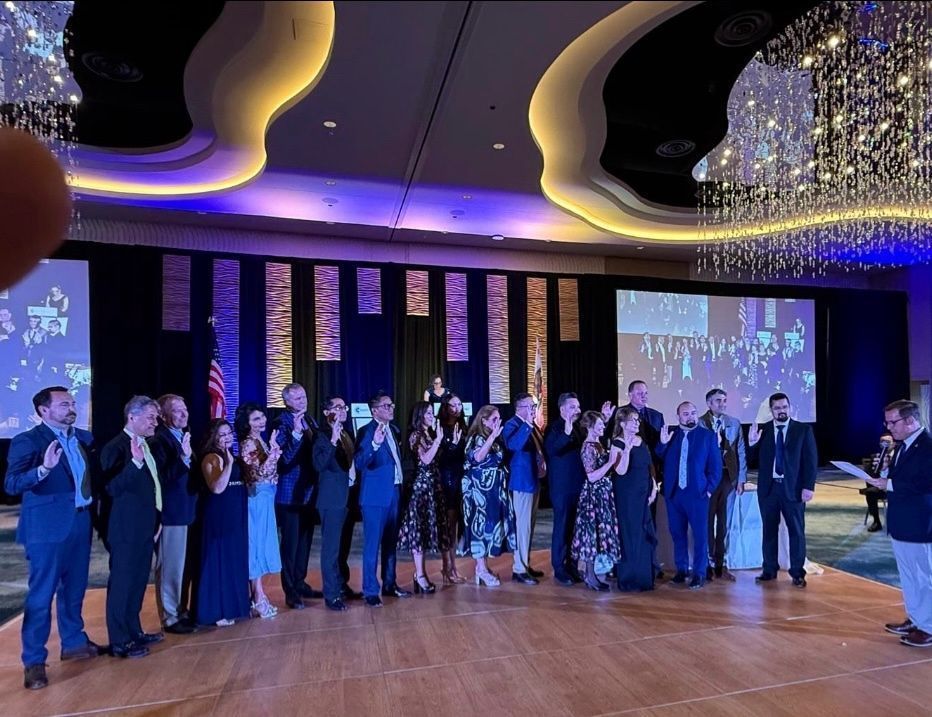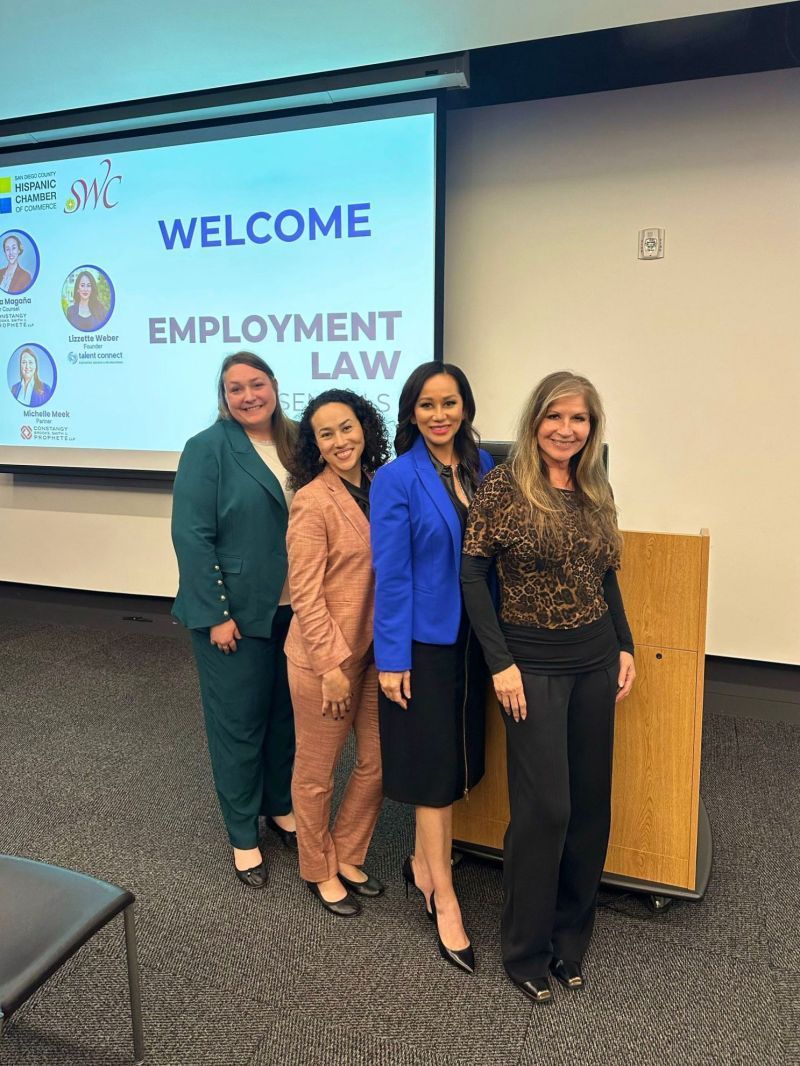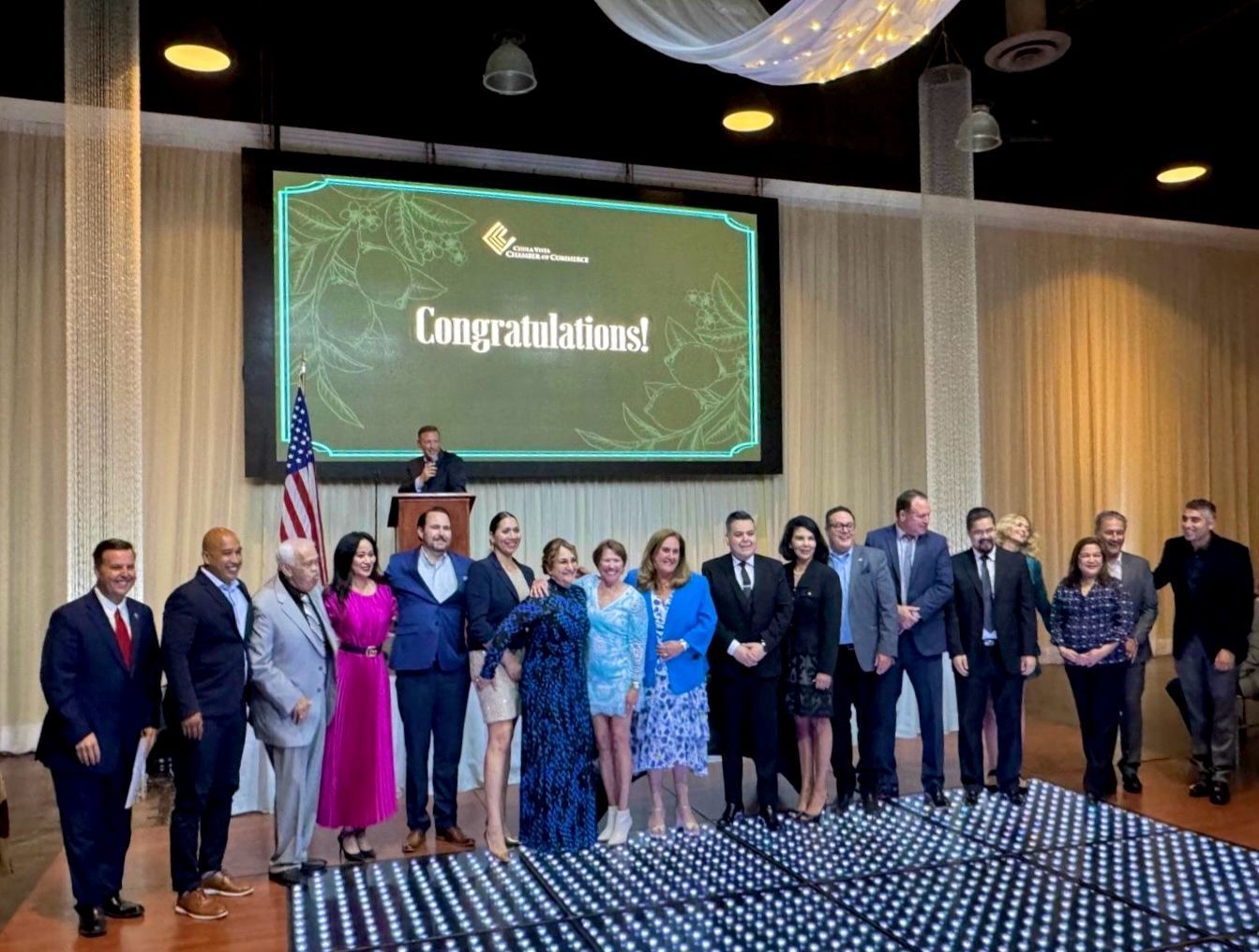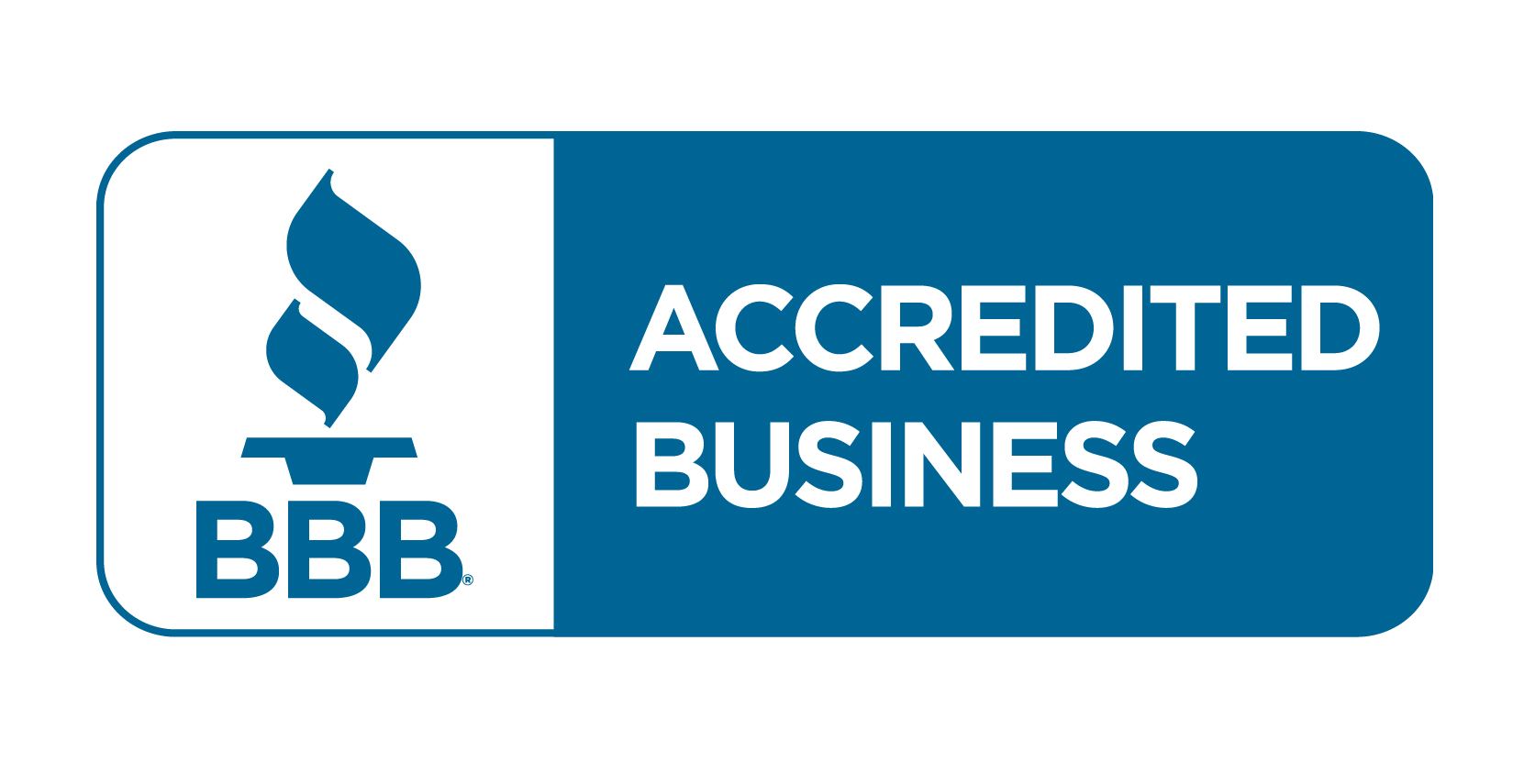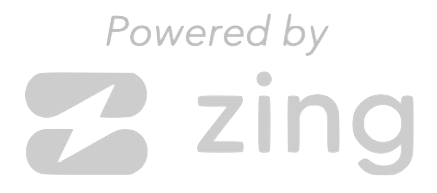INSIGHTS
Valuable Resources
Stay Informed with the Latest Trends and Expert Advice
Our Blog
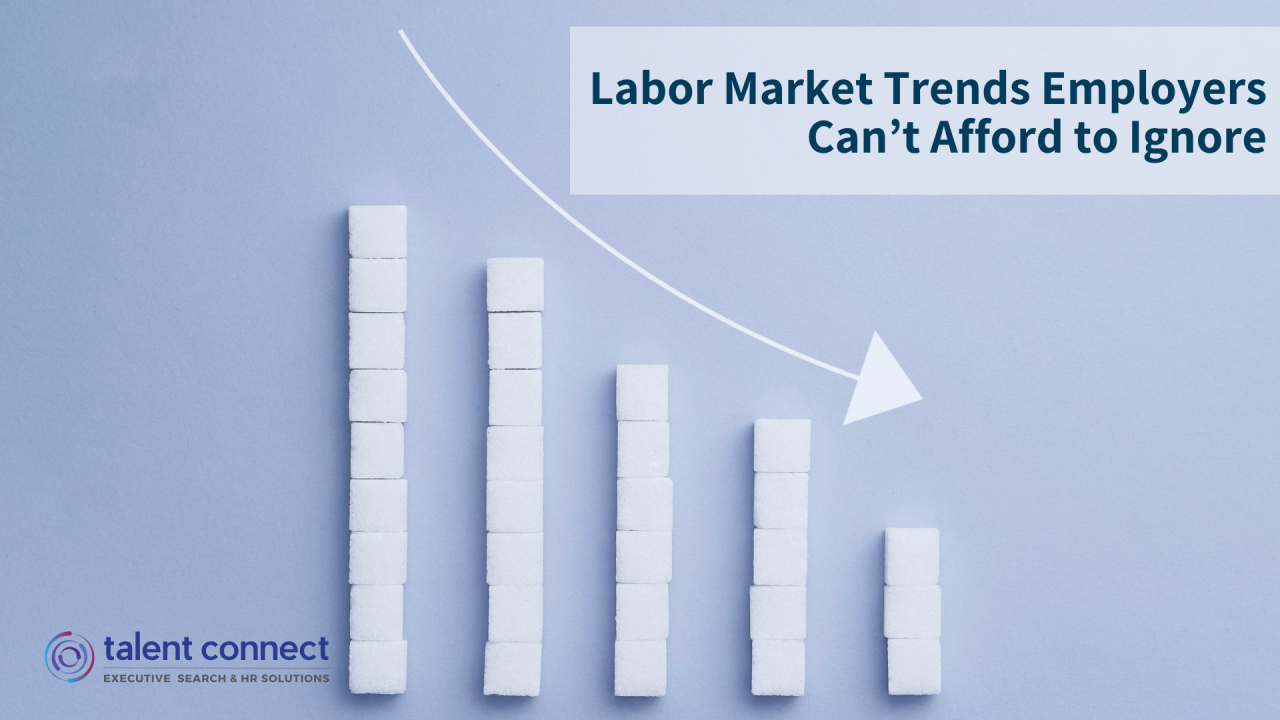
As Q2 of 2025 unfolds, the U.S. labor market is walking a tightrope—showing strong headline numbers while revealing deeper shifts beneath the surface. For California employers, HR leaders, and job seekers, understanding these evolving dynamics is critical to developing smart, future-proof talent strategies. A Labor Market in Transition According to SHRM’s Senior Labor Economist Justin Ladner, the U.S. economy ended 2024 on solid footing. Revised job reports from late last year showed strong nonfarm payroll growth, and early 2025 continues to reflect healthy employment gains—suggesting a return to post-pandemic normalcy. But this recovery is uneven. Job creation is not spread equally across sectors or regions. Lagging indicators—like unemployment rates and turnover data—can mask real-time labor shifts. Federal policy changes, such as shifts in government spending, contractor rules, and trade tariffs, may also alter hiring trends in ways not yet reflected in the data. For employers, relying on national averages is no longer sufficient. Industry-specific and regional insights are essential for staying competitive. Growth Industries to Watch Health care and social assistance continue to lead job creation. Since February 2022, this sector has added over 2.8 million jobs—nearly one-third of all new roles nationwide. As the population ages, this demand is expected to grow well into the next decade. Government jobs have also grown significantly, adding 1.57 million roles across federal, state, and local levels. Most of the gains are at the local and state level, reflecting continued need for educators, public safety staff, and municipal workers. For employers in these sectors, the challenge lies in recruiting and retaining talent in an increasingly competitive environment. Investing in professional development, internal pipelines, and succession planning is crucial. Declining Sectors and the Role of Automation Not all industries are on the upswing. Retail trade continues its long-term decline, adding only 10,000 jobs since early 2022. The shift to online shopping, automation, and changing consumer habits is transforming the traditional retail workforce. The information sector—which includes tech, media, and telecom—saw a pandemic-era hiring boom driven by remote work needs. But since late 2022, it has experienced softening, with job losses across the board. While the sector remains critical to innovation, employers should brace for short-term fluctuations. Administrative and support services have shed nearly half a million jobs in the same period. Many roles in this sector involve repetitive tasks, making them highly vulnerable to automation and artificial intelligence. For organizations in these affected industries, now is the time to rethink job structures, invest in upskilling, and adopt more tech-forward staffing models. Regional Labor Availability Tells a Different Story While national labor statistics may look stable, local realities vary. The unemployed-to-job-openings ratio (UJOR), a key labor supply measure, stood at 0.9 nationally in early 2025—indicating fewer job seekers than jobs. But that number ranges dramatically by state, from 0.4 to 1.7. California, Texas, and parts of the Midwest have more job seekers per opening, while regions like Virginia and the Mountain West face significant worker shortages. For employers in high-demand regions, recruitment may require offering hybrid options, expanding geographic reach, or developing relocation incentives to attract talent from outside the immediate area. Beyond Unemployment: Underemployment and Wage Trends The headline unemployment rate (U3) remains low at 4.1%. But a rise in the broader U6 rate—which includes part-time workers seeking full-time roles and discouraged job seekers—points to growing underemployment. Wage growth, another key metric, has cooled from a 2022 high of 5.9% to 4% today. While that’s a relief for employers managing inflation, it’s still above the long-term average of 3.1%, underscoring continued pressure in the competition for talent. Today’s candidates are looking for more than a paycheck. Work-life balance, meaningful career paths, flexibility, and strong company culture are now core decision factors. Hiring and Retention in the Post-Resignation Era Despite fewer hires, job openings remain elevated at 4.6%. This mismatch points to a widening skills gap: plenty of jobs, but not enough qualified candidates to fill them. The voluntary quits rate—a key driver of the “Great Resignation”—has declined significantly, suggesting more cautious employee behavior in an uncertain economy. Layoffs and discharges remain low, with most organizations holding onto the talent they already have. However, lower turnover doesn’t necessarily mean greater satisfaction. Workers may be staying put for financial security, not because they feel engaged or supported. This presents a critical opportunity for employers to focus on internal mobility, leadership development, and cultural alignment. What Employers Should Be Doing Now To navigate this complex landscape, employers must adopt a proactive, data-informed approach to workforce strategy. Dig into the data – National averages won’t cut it. Use labor market analytics tailored to your industry and region to inform recruitment and workforce planning. Prioritize workforce agility – From mapping future skills to refining internal pipelines, employers should plan not just for growth, but for transformation. Tap into passive talent – With fewer candidates actively job-seeking, recruiting efforts must extend beyond job boards. Strong employer branding and partnerships with executive search firms can help surface high-caliber, hard-to-reach talent. Double down on retention – Today’s workforce values transparency, development, and belonging. Offering clear advancement pathways and fostering an inclusive culture will drive loyalty and performance. At Talent Connect, our mission is to help employers make sense of these dynamic trends and build resilient hiring strategies. Whether you're looking to fill critical roles, optimize workforce planning, or recruit top executive talent, we’re your partner for navigating what’s next.

Employers: Are You Prepared for Increased I-9 Audits? Prepare for More I-9 Audits Under the Trump Administration As immigration policies shift under the new administration, employers must be proactive in ensuring compliance with Form I-9 requirements. With a renewed focus on worksite enforcement, businesses across industries should prepare for a potential surge in I-9 audits. A strategic approach to self-auditing, compliance training, and legal preparedness can help organizations avoid costly fines and reputational risks. Why I-9 Audits Are Expected to Increase During the first Trump administration, U.S. Immigration and Customs Enforcement (ICE) dramatically increased I-9 audits, jumping from 1,360 audits in 2017 to nearly 6,450 by 2019. ICE had plans to conduct 15,000 audits in 2020 before the COVID-19 pandemic slowed enforcement efforts. Now, with new executive actions prioritizing "merit-based" hiring and strict immigration enforcement, experts anticipate another wave of aggressive audits targeting businesses that fail to maintain compliant I-9 records. Companies in agriculture, construction, hospitality, and manufacturing are historically high-priority targets for worksite enforcement investigations, particularly those not enrolled in E-Verify. However, audits have expanded to a wide range of industries, making I-9 compliance a priority for all employers. Common I-9 Compliance Mistakes That Could Cost You While I-9 compliance may seem straightforward, even minor errors can result in steep fines. The current penalty for paperwork violations is up to $2,789 per error, and knowingly employing an unauthorized worker can lead to fines exceeding $27,000 per violation. In severe cases, business owners and HR managers may face criminal charges, business license revocation, and even imprisonment. Some of the most common I-9 compliance mistakes include: Incomplete or missing forms – Every employee must have a valid I-9 form on file, completed within three business days of hire. Late or incorrect completion – Errors in Section 1 (employee information) and Section 2 (employer verification) can lead to violations. Failure to retain I-9 forms properly – Employers must keep records for all active employees and for at least three years after hire or one year after termination (whichever is later). Incorrect documentation verification – Employers must verify and retain valid work authorization documents (e.g., a U.S. passport, permanent resident card, or an employment authorization document). A visa stamp alone is not valid proof of work authorization. Using outdated I-9 forms – As of August 1, 2023, employers must use the latest Form I-9 version, which remains valid through July 31, 2026, or May 31, 2027. How to Prepare: Self-Audits and Legal Best Practices With increased scrutiny from ICE, proactive I-9 audits can help businesses identify and correct compliance issues before an official inspection occurs. Organizations should conduct a thorough internal audit, ensuring: Every employee has a properly completed I-9 form on file Documents are reviewed and verified correctly Expired work authorizations are updated Retention policies follow federal guidelines HR teams are trained on compliance best practices Employers should also work closely with legal counsel or compliance experts to address any vulnerabilities, especially if unauthorized workers are identified during an internal review. Taking corrective action immediately can help mitigate potential penalties. What Happens During an I-9 Audit? If ICE initiates an I-9 audit, employers typically receive a Notice of Inspection (NOI) and must provide: All current and terminated employees’ I-9 records within the retention period A list of employees, payroll records, and information on third-party contractors Supporting documentation related to work authorization Employers have three business days to produce these documents, though legal counsel can sometimes negotiate an extension if records are stored remotely. ICE will then review the forms and issue one of the following: Compliance letter – No violations found Notice of Suspect Documents – ICE believes employees lack proper work authorization Notice of Technical or Procedural Failures – Paperwork errors must be corrected within 10 days Notice of Intent to Fine (NIF) – Substantial violations found, requiring legal negotiation or litigation Why Compliance Matters Now More Than Ever Beyond avoiding fines and legal penalties, I-9 compliance is essential for maintaining business operations and protecting company reputation. High-profile enforcement actions have led to business closures, contract losses, and leadership resignations. Companies should see compliance as a long-term investment, rather than a short-term obligation. Key Takeaways for Employers - Stay proactive – Conduct regular internal I-9 audits to identify and correct errors before ICE audits occur. - Train your HR team – Ensure HR professionals and hiring managers understand I-9 requirements and compliance best practices. - Use the latest I-9 forms – Ensure all new hires complete the updated August 1, 2023, edition of Form I-9. - Seek legal guidance – If faced with an I-9 audit or potential violations, consult immigration and HR compliance experts to mitigate risk. At Talent Connect Executive Search & HR Consulting, we specialize in helping businesses stay ahead of workforce compliance challenges. Whether you need guidance on I-9 audits, workforce policies, or HR best practices, our team is here to support you. Connect with us today!

Trends, Challenges, and How to Stay Ahead The job market is evolving faster than ever, shaped by technological advancements, labor shortages, and shifting workforce demands. If you're a job seeker or a professional aiming for career growth, understanding the 2025 job market landscape is essential. Key Trends Shaping the 2025 Job Market The job market in 2025 is facing significant disruptions—some offering new opportunities while others pose serious challenges for job seekers. AI and Automation: The Workforce Shake-Up "The frog is boiling"—is 2025 when AI finally comes for your job? According to The Times, AI and automation are redefining roles across industries, particularly in tech and white-collar jobs. Salesforce plans to lay off 1,000 employees and halt new hiring in certain roles. Google is encouraging 20,000 employees to leave voluntarily as AI continues to replace traditional jobs. Meta’s CEO, Mark Zuckerberg, predicts that AI ‘agents’ will soon rival human coders, raising concerns about job security. AI is here to augment human capabilities, but it’s also displacing low- and mid-level roles. Professionals must upskill, adapt, and position themselves strategically to remain relevant and competitive in this rapidly changing job market. Worker Shortages: A Crisis in the Making? "Worker shortages may define the 2025 economy." According to Reuters, despite layoffs in tech, the job market remains tight in many industries, with severe worker shortages in construction, healthcare, and manufacturing. Key findings: In the U.S., 8.5 million jobs are currently unfilled across multiple industries. Construction and skilled trades are facing some of the highest worker shortages. Healthcare is experiencing a 10-15% staffing gap, leaving thousands of positions vacant. For job seekers, this is an opportunity. Companies are actively seeking trained, qualified candidates—especially those who can step into leadership roles. If you're looking to advance your career, this is the moment to sharpen your skills, build leadership abilities, and stand out as a top candidate. The Best and Worst Industries for Job Seekers in 2025 "Are you in the wrong job?" Not all industries are experiencing job shortages—some are booming, while others are shrinking. According to The Sun, here’s what to expect: Industries on the Rise: AI & Tech Roles: AI developers are in high demand, with salaries reaching up to $120,000. Construction & Skilled Trades: Demand is high due to government plans to build 1.5 million new homes. Healthcare & Renewable Energy: Increased hiring and salary growth in these sectors. Industries in Decline: Manufacturing: Automation is leading to widespread job reductions. Retail & Hospitality: High operating costs and shifting consumer behavior are impacting job availability. If you’re working in an industry that is declining, it’s time to prepare, reskill, and transition into a high-growth sector. Why You Need to Be More Prepared Than Ever The Competition is Fierce With AI reshaping industries and labor shortages affecting key sectors, job seekers must be proactive in securing their future. Gone are the days when a basic resume and a few job applications were enough. Employers are now seeking professionals who bring leadership, critical thinking, and adaptability—qualities that separate great candidates from the rest. Leadership Matters More Than Ever If you’re looking for a promotion, management position, or executive role, it’s essential to demonstrate leadership skills, decision-making abilities, and strategic thinking. At Talent Connect, we provide training to help professionals: Develop strong leadership abilities Improve communication and public speaking Master job search strategies & resume-building techniques Learn negotiation skills for salary and promotions At Talent Connect Executive Search and HR Solutions, we empower individuals with the tools, skills, and strategies to secure job opportunities, obtain promotions, and excel in leadership roles. More than ever, being well-prepared and continuously sharpening your skills is critical for staying competitive in an uncertain economy.

Recent federal directives have led organizations to reassess their Diversity, Equity, and Inclusion (DEI) initiatives to ensure compliance while continuing to foster inclusive workplaces. President Trump’s executive order, "Ending Illegal Discrimination and Restoring Merit-Based Opportunity," prohibits DEI programs in federally funded entities and among federal contractors, prompting many organizations to evaluate and adjust their policies. While regulatory changes present challenges, organizations can take proactive steps to align with the new guidelines while maintaining a commitment to workplace equity and inclusion. Key Considerations for Organizations Policy Review : Conduct a comprehensive audit of current DEI programs to ensure they align with the new regulatory framework. The focus should be on fostering equal access to opportunities, professional development, and merit-based advancement while ensuring compliance and avoiding any appearance of preferential treatment based on protected characteristics. Legal Compliance : Organizations must ensure all DEI initiatives comply with current anti-discrimination laws and support merit-based practices as outlined in the executive order. Reviewing policies with legal and HR professionals can help mitigate risk and maintain compliance. Strategic Frameworks : Utilizing structured approaches such as SHRM’s BEAM (Bias, Equity, Accessibility, and Merit) can help organizations align their DEI efforts with legal requirements while fostering a fair and inclusive work environment. A strategic, compliance-focused approach ensures that DEI initiatives remain effective and legally sound. Industry Responses Despite the federal directive, many organizations remain steadfast in their commitment to DEI, recognizing its long-term benefits for workplace culture, innovation, and performance. UBS : CEO Sergio Ermotti reaffirmed that the bank’s DEI policies remain unchanged, emphasizing that diversity and inclusion are deeply embedded in UBS’s culture and independent of political shifts. NFL : Commissioner Roger Goodell stated that the league will continue its diversity programs, highlighting that DEI efforts have played a significant role in the NFL’s success and will remain a priority. Moving Forward As organizations navigate these changes, it is crucial to take a balanced approach—ensuring compliance while maintaining an inclusive workplace culture. By prioritizing fairness in advancement, adopting structured DEI frameworks, and fostering strong leadership, companies can continue to create equitable opportunities for all employees. Talent Connect specializes in leadership recruitment and human resources strategies, helping organizations adapt to evolving regulations with confidence. If you have any questions or need expert assistance in refining your DEI strategies, please don’t hesitate to reach out to Talent Connect Executive Search and HR Solutions. We are here to help you navigate these changes effectively while staying true to your organization’s values. Visit our Careers Page

Sources: Gallup Workplace Insights, 2024; LinkedIn Workforce Report, 2024; McKinsey Future of Work Study. The job market is shifting fast. According to Gallup, 51% of employees are actively looking for or open to new opportunities. If you’re not planning your next move, someone else is. Here’s the truth: 2025 will reward candidates who are prepared, skilled, and ready to adapt. So what does that mean for you? Key Trends You Need to Know to Stay Ahead in 2025 1. Employers Want Future-Ready Skills AI tools, data analytics, and digital transformation are reshaping industries. Employers are now prioritizing candidates with: AI literacy Problem-solving abilities Adaptability in technology-driven environments What to Do : Take online courses in AI, automation tools, and leadership. Platforms like Coursera, Udemy, or LinkedIn Learning are great places to start. Add certifications and tech-related achievements to your resume. 2. Flexibility is Here to Stay Hybrid and remote work options remain a priority for job seekers. But here’s the catch: Employers want proof that you can thrive in flexible environments. What to Do : Update your resume with examples of how you’ve worked remotely or in cross-functional teams . Highlight your time management, communication, and results-driven skills. 3. Employers Are Listening—But You Must Speak Up Why are people changing jobs? 30% cite compensation and career growth. 70% say it’s about daily frustrations like poor communication, workload stress, or unclear advancement paths. What to Do : Be clear about what you want: a better salary, opportunities for growth, or a healthier work environment. Prepare for interviews by sharing real examples of how you solved problems , led projects, or delivered measurable results. Your 2025 Career Action Plan 1. Build a Standout Personal Brand Refresh your resume with measurable achievements (e.g., “Improved team efficiency by 20% in Q2”). Optimize your LinkedIn profile: 2. Upskill and Reskill The most in-demand candidates are always learning. Invest in AI tools, leadership, and skills relevant to your industry. Showcase these skills by adding certifications or projects to your portfolio. 3. Be Interview-Ready Prepare to answer behavioral interview questions using the STAR method : Situation : Describe a challenge. Task : Explain your role. Action : Share what you did. Result : Highlight the impact or outcome. Take Control of Your Career in 2025 At Talent Connect, we help professionals like you find roles that fit your skills, goals, and values. Whether you’re stepping into leadership, changing careers, or re-entering the workforce, we’re here to guide you every step of the way. → Ready to Elevate Your Career? Let’s Connect Today

Gallup's latest research highlights a staggering truth: 42% of employees who voluntarily left their jobs say their departure could have been prevented. This is not just a statistic; it’s a wake-up call for organizations that are feeling the pain of turnover costs, lost productivity, and disengaged teams. The Cost of Ignoring Turnover You might think your team is stable, but with 51% of employees actively watching for new opportunities , the risk is real. When employees leave: Replacing a leader costs 200% of their salary. Replacing technical professionals costs 80% of their salary. Replacing frontline employees costs 40% of their salary. (Source: Gallup Workplace Insights, 2024) What’s worse, turnover impacts: Team morale : Seeing coworkers leave raises doubt. Customer experience : New hires take time to reach optimal productivity. Your budget : Recruitment and onboarding aren’t cheap. The solution? Act before employees check out. Why Employees Leave—and How to Keep Them 1. Managers Are Missing the Mark Nearly 45% of employees who left their jobs said their manager never checked in on their satisfaction or future during the final three months. Many left without even speaking to their supervisor. Action Step : Schedule regular, meaningful conversations —weekly or monthly—to: Discuss job satisfaction and roadblocks. Recognize accomplishments. Map out career development opportunities. 2. Compensation and Career Advancement Are Still Critical While managers might think their hands are tied when it comes to compensation, the reality is: 30% of preventable exits are due to pay or growth concerns. Employees want to see a clear path for career advancement . Action Step : Benchmark roles to ensure compensation is competitive. Build personalized career roadmaps that show employees their growth potential. Pro Tip : Tie compensation discussions to performance and skill development so employees see tangible rewards for their work. 3. Address Burnout Before It’s Too Late Organizational issues like heavy workloads and staffing gaps are silent killers of retention. Nearly 25% of preventable turnover is tied to these frustrations. Action Step : Use pulse surveys or 1:1 meetings to identify workload concerns. Streamline processes and set clear priorities to reduce stress. The Manager's Role: Take Action Before It’s Too Late Turnover doesn’t happen overnight—yet many leaders only realize there’s a problem when it’s too late to solve. By focusing on regular communication, employee growth, and organizational improvements , you can cut preventable turnover dramatically. At Talent Connect, we’ve helped organizations retain and attract top talent through: Proactive hiring strategies Retention solutions tailored to your team’s needs Leadership coaching to build high-performing, engaged teams Make 2025 Your Year of Talent Retention Don’t let turnover hurt your bottom line. Let’s work together to keep your best employees engaged, productive, and thriving. → Schedule a Strategy Call with Talent Connect Today

Creating Exceptional Hiring Experiences in a Competitive Market In today’s competitive job landscape, delivering a standout hiring experience has become essential for attracting top talent. Candidates’ initial interactions with a company don’t just influence their decision to accept an offer—they also set the tone for their entire journey as employees. A recruitment process that clearly communicates role expectations, cultural alignment, and growth opportunities is key to enhancing both immediate candidate satisfaction and long-term retention. The Lasting Impact of a Positive Recruitment Journey Research highlights the significant effect of a well-structured hiring process. Employees who report a positive recruiting experience are twice as likely to feel their job matches what was initially promised, and 2.7 times more likely to describe their role as “better than expected.” These benefits extend beyond initial satisfaction; employees with exceptional hiring experiences are also 3.2 times more likely to feel a strong connection to their company’s culture and three times as likely to express high levels of long-term job satisfaction. By investing in a thoughtful hiring process, companies are more likely to build a committed and engaged workforce. Key Components of a Winning Recruitment Process Engaging, Transparent Interviews: Structured, intentional interviews give hiring managers a chance to authentically showcase the organization’s culture and its unique employee value proposition. By offering transparency around role expectations and providing insights into daily work environments, candidates feel respected and valued, empowering them to assess whether they will thrive within the company. Respect for Candidates’ Time Through Efficient Turnaround: Timeliness is increasingly essential in the recruiting process. Many candidates cite turnaround time as a deciding factor in accepting an offer. Maintaining momentum is crucial, as delays can cause candidates to lose enthusiasm or explore other opportunities. A well-paced hiring process demonstrates respect for candidates’ time, showing that the company values their interest and effort. Clear, Honest Role Previews: Today’s candidates seek a transparent view of their potential role and how it aligns with the company’s mission and values. Providing consistent information about responsibilities, growth potential, and team dynamics helps manage expectations early, building trust and helping candidates make informed decisions. Those who clearly understand what to expect are more likely to join and remain engaged in the long term. How to Optimize Candidate Interactions Companies can stand out by designing every candidate interaction to communicate their employee value proposition effectively. Leaders should regularly assess and refine their hiring practices, ensuring that cultural previews and core values are integrated into each stage of the recruitment journey. Additionally, respecting candidates’ time, fostering meaningful conversations during interviews, and offering authentic cultural insights can differentiate a company in a crowded talent market. By creating these intentional, authentic touchpoints, companies strengthen their reputation and improve offer acceptance rates. Building a Foundation for Retention An exceptional hiring experience isn’t just a recruitment tool—it’s a foundation for long-term employee satisfaction and retention. When new hires feel informed and valued early on, companies set the stage for stronger engagement and productivity. This solid foundation helps employees transition smoothly into their roles, reinforcing their decision to join and boosting morale, which ultimately enhances team stability and overall performance. At Talent Connect, we support our clients in developing a seamless, engaging recruitment process can attract high-quality candidates and nurture lasting employee relationships. By fostering a loyal workforce from the very first interaction, companies can drive engagement and long-term success. Let’s connect to discover how we can empower your leadership, foster team collaboration, and adapt to the ever-changing demands of the modern workplace. By aligning your vision with actionable strategies, we’ll help you drive growth and prepare for the future of work.

In today's ever-evolving, boundaryless workplace, effective leadership is about much more than setting targets. Leaders need to foster trust, communication, and adaptability to build high-performing teams that thrive in dynamic environments. 1. Define a Clear Vision Effective leaders create a clear, actionable vision that guides their teams. Teams crave direction, and without a shared goal, they feel uncertain and lose focus. Leaders must continuously adapt this vision to changing conditions and communicate it regularly to keep their teams aligned and motivated. 2. Be Genuine, Even if it Means Lowering Your Guard Great leaders aren’t afraid to show their human side. By revealing their vulnerabilities at the right moments, they build trust and respect within their teams. High-impact leaders know that being genuine, rather than projecting perfection, encourages stronger relationships and fosters a healthier team dynamic. 3. Master the 70-20-10 Rule for Active Listening The best leaders listen more than they speak. By applying the 70-20-10 rule—70% listening, 20% asking insightful questions, and 10% offering feedback—leaders stay informed and engaged with their team’s needs. This ensures decisions are well-rounded and inclusive, helping teams feel heard and valued. 4. Embrace Tough Conversations Strong leaders don’t shy away from difficult conversations. Burying problems doesn’t make them go away, and avoiding tough topics creates dysfunction. By addressing challenges directly, leaders build an open, trusting culture where nothing is swept under the rug, and issues are resolved before they escalate. 5. Follow Through on Commitments Consistency is key. Leaders who follow through on their commitments build trust and credibility. They know how to distinguish between professional trust and blind loyalty, ensuring the team stays focused on achieving its goals while maintaining a culture of accountability and transparency. 6. Encourage Team Voices In high-performing teams, every voice matters. Leaders should ensure that team members feel empowered to express their ideas. By encouraging others to speak first, leaders foster an inclusive environment that values diverse perspectives, driving innovation and collaboration. 7. Handle Non-Performing Team Members Successful leaders address underperformance head-on, but they often do so through ‘passionate champions’—team members who are deeply committed to success. These champions help maintain team unity and aren’t afraid to address non-performing players, preserving focus and momentum toward team goals. 8. Lighthearted Leadership: Leaders who use humor effectively build strong rapport with their teams, but they avoid sarcasm or humor at others’ expense. Self-deprecating humor helps lighten the mood, while reckless humor can backfire, damaging relationships and credibility. 9. Be Confident and Dependable Above all, leaders must project confidence and reliability. By addressing real issues and not skimming over tough conversations, they demonstrate resilience and reliability. Teams thrive when they know their leader will stand by them, especially in challenging times. This kind of dependability fosters trust and empowers teams to perform at their best. At Talent Connect, we specialize in equipping leaders with the tools and strategies to navigate complex environments and lead high-performing teams. Whether you're a startup or an established enterprise, strong leadership is the foundation for success in today’s boundaryless world. Let’s connect to discover how we can empower your leadership, foster team collaboration, and adapt to the ever-changing demands of the modern workplace. By aligning your vision with actionable strategies, we’ll help you drive growth and prepare for the future of work.

As we approach 2024, workplace dynamics are shifting dramatically. The relationship between employers and employees is evolving, and organizations must rethink their approaches to management, culture, and hybrid work. To succeed in this new environment, leaders need to stay informed and proactive. 1. Global Worker Stress Remains at Record Highs While employee engagement has been making a comeback, it hasn’t yet offset the record-high levels of stress in the workplace. Gallup’s recent report reveals that over 52% of employees in the U.S. and Canada feel stressed daily—a troubling trend that impacts not only productivity but also employee retention and wellbeing. This ongoing stress crisis is tied to workplace demands, post-pandemic adjustments, and economic pressures. Leaders must take a holistic approach to addressing employee wellbeing by introducing stress management programs, flexible work policies, and support systems that prioritize mental health. In 2024, the challenge for leaders will be to determine whether the positive rise in engagement can outpace the negative impacts of stress, ensuring their teams remain productive, healthy, and motivated. 2. Engagement Is Slowly Recovering, but Connection to Purpose Is Dwindling Employee engagement has started to rebound from the post-pandemic slump, but there’s a growing concern: employees feel less connected to their company’s mission and purpose. This lack of connection can result in employees doing just enough to meet expectations, rather than going above and beyond. When employees feel aligned with an organization’s values and purpose, they are more likely to push toward excellence, be more productive, and stay with the company long-term. Leaders must focus on rebuilding this connection by clearly communicating their organization’s goals, celebrating successes, and ensuring employees understand how their work contributes to the bigger picture. 3. Trust in Leadership Is Slowly Rebounding Trust in leadership took a hit during the pandemic, and while it’s slowly recovering, the current state of trust is still alarmingly low. Only 23% of U.S. employees strongly agree that they trust their organization’s leadership, creating a disconnect between employees and decision-makers. For leaders, restoring trust means stepping up communication efforts, being transparent, and fostering a supportive environment where employees feel heard. When leaders actively engage with their workforce and inspire confidence in the future, the impact is profound: 95% of employees in high-trust environments say they fully support their leaders. Building trust in 2024 will be a cornerstone of effective leadership, helping organizations navigate change, build resilient teams, and foster loyalty across the workforce. 4. Managers Are Under Pressure and Need Support Managers have faced unprecedented challenges over the last few years, juggling increased workloads, tighter budgets, and the emotional strain of leading teams through uncertainty. Gallup’s research highlights that managers are more likely to experience burnout, disengagement, and work-life imbalance than non-managers. This “manager squeeze” is a significant concern for organizations, as managers are critical to driving team collaboration and engagement. Leaders must take action by investing in manager training and support, giving them the tools they need to succeed in today’s fast-paced, ever-evolving work environment. Without adequate support, these issues will trickle down to the rest of the team, negatively affecting employee performance and overall engagement. As we look to 2024, leaders must prioritize developing resilient, well-equipped managers who can handle the complexities of today’s workforce. 5. Hybrid Work Is Here to Stay, But It Needs a Strategy Hybrid work has become the norm for remote-capable employees, and most organizations, especially large enterprises, have accepted that this arrangement is here to stay. In fact, a recent survey of Fortune 500 CHROs revealed that 80% have no plans to reduce remote work options in the next year. But simply offering hybrid work isn’t enough—organizations need a clear, long-term hybrid work strategy that optimizes productivity and collaboration. Leaders should focus on creating a compelling workplace value proposition that appeals to both in-office and remote workers, ensuring that the benefits of hybrid work (flexibility, work-life balance, increased engagement) are fully realized. Additionally, training managers to lead hybrid teams effectively, fostering strong communication, and revising performance management systems will be essential to maintaining a positive hybrid work environment in 2024. 6. Hybrid Culture Offers Big Benefits—If Done Right Hybrid work isn’t just a trend—it’s a powerful way to boost employee engagement, reduce turnover, and improve overall well being. However, it comes with its own set of challenges. As more teams work remotely and on varying schedules, leaders must be intentional in maintaining a strong hybrid work culture. Organizations that want to thrive in this model must prioritize building relationships, enhancing team collaboration, and reinforcing company values, regardless of where employees are working. Leaders and managers alike need to focus on maintaining clear communication, promoting trust, and creating opportunities for employees to stay connected and aligned with company goals. When done right, hybrid work can significantly improve retention and talent acquisition while reducing employee burnout and expanding access to a wider, more diverse talent pool. At Talent Connect , we understand the complexities of navigating these evolving workplace trends. Whether you’re looking to improve employee engagement, develop stronger leaders, or implement a sustainable hybrid work strategy, our expertise in executive search and HR services will help your organization succeed in 2024. Let’s connect and explore how we can help you drive organizational growth, build stronger teams, and navigate the workplace trends of tomorrow.

Transitioning from a peer to a management role can be one of the most challenging yet rewarding steps in a professional career. It requires a shift in mindset, new skills, and the ability to navigate the complexities of leadership. Here’s what first-time managers need to know when stepping into their new role: 1. Shift Your Focus from Self to Team As an individual contributor, your success was about your own performance. In a management role, the focus shifts to your team's performance. It’s essential to “flip the script” and shine the spotlight on others. Your success is now tied to how well your team performs. 2. Set Clear Expectations Communicating openly with your team about your new role is crucial. Address any potential awkwardness by discussing the transition with former peers. Setting clear boundaries and expectations from the start will help manage relationships and create a productive environment. 3. Embrace Delegation New managers often struggle with the temptation to continue doing the work themselves. However, true leadership involves empowering your team by delegating tasks that align with their strengths. This not only helps develop your team but also builds trust. 4. Seek Training and Coaching Management is not instinctive; it requires learning and growth. Take advantage of formal leadership training, coaching, and mentorship opportunities to develop the interpersonal and strategic skills needed to lead effectively. A self-assessment can also help identify your leadership strengths and areas for improvement. 5. Build a New Support Network Don’t go it alone. Connecting with other managers at your level is essential to gain insights and advice. Cultivate a peer group of fellow leaders to share best practices, challenges, and strategies for success. 6. Create an Infrastructure for Success For organizations, providing structured support for new managers is key. A well-prepared leader is one who’s been given the tools to succeed. Organizations should ensure that leadership development, training, and mentoring opportunities are in place for smooth transitions. Stepping into management for the first time is both challenging and fulfilling, but with the right preparation and mindset, new leaders can not only navigate this transition but thrive in their new roles. At Talent Connect, we’re committed to supporting professionals through every stage of their careers—helping them become the effective leaders of tomorrow. Stay connected with Talent Connect for more insights on leadership, talent development, and HR best practices !
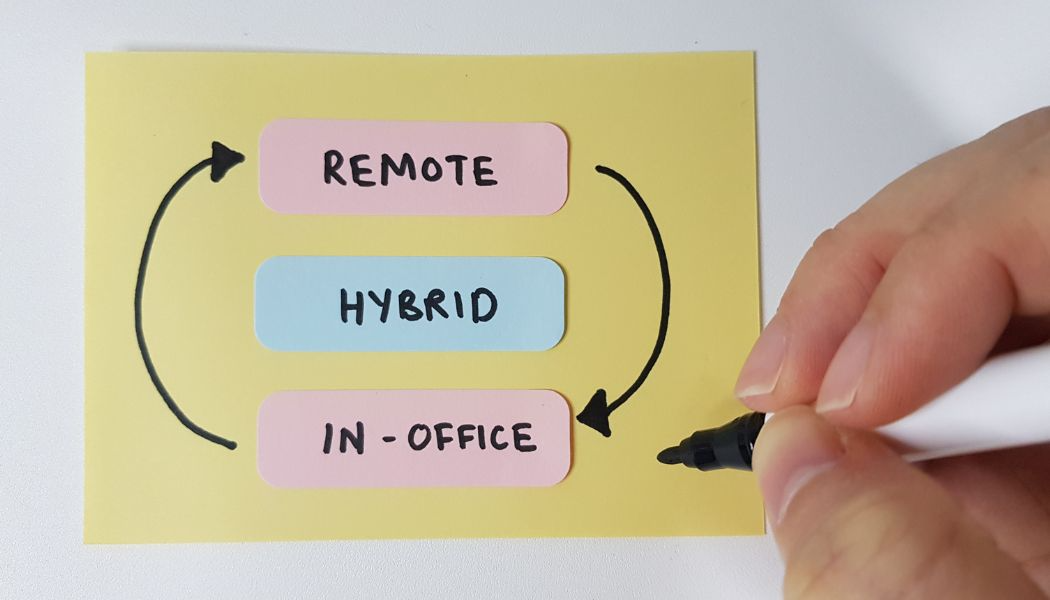
Did you know? According to a 2023 Gallup poll, 45% of full-time employees in the U.S. are now working remotely at least part of the time. Additionally, a 2023 McKinsey report found that 58% of employees prefer a hybrid work model. Discover how these trends are reshaping the workplace landscape and what it means for your organization in our latest newsletter. Whether it's remote, hybrid, or in-person, flexibility is key to attracting and retaining top talent in the evolving world of work. Read our Newsletter on LinkedIn here...

Dear Talent Connect Community,In today's interconnected world, fostering an inclusive and diverse workplace culture isn't just a nice-to-have— it's a strategic imperative that drives innovation, fosters collaboration, and fuels business success. At Talent Connect Executive Search and HR Solutions, we're committed to helping our clients build teams that reflect the rich tapestry of human experience. Here are some specific ways that you can ensure you have an inclusive and diverse culture and team: 1) Review Your Hiring Practices: Take a close look at your recruitment and hiring processes to ensure they are inclusive and bias-free. Consider implementing blind resume reviews, diverse hiring panels, and targeted outreach to underrepresented groups to attract a more diverse pool of candidates. 2) Invest in Diversity Training: Provide ongoing education and training for your team members to raise awareness and understanding of diversity issues. Offer workshops, seminars, and online courses that focus on topics such as unconscious bias, cultural competency, and inclusive leadership. 3) Promote Inclusive Leadership: Empower your leaders to champion diversity and inclusion in the workplace. Encourage them to lead by example, actively listen to diverse perspectives, and create opportunities for all team members to contribute and thrive. 4) Create Safe Spaces for Dialogue: Foster open and honest communication by creating safe spaces for dialogue and discussion. Encourage team members to share their experiences, perspectives, and ideas, and actively listen to their feedback and concerns. 5) Celebrate Diversity: Recognize and celebrate the diverse backgrounds, experiences, and perspectives of your team members. Host cultural events, heritage months, and diversity celebrations to showcase the richness of your organization's diversity. 6) Offer Employee Resource Groups: Establish employee resource groups (ERGs) or affinity groups to provide support, networking, and mentorship opportunities for underrepresented employees. These groups can help foster a sense of belonging and community within your organization. 7) Regularly Assess and Measure Progress: Continuously assess and measure your organization's progress towards building an inclusive and diverse culture. Collect data on demographics, employee engagement, and retention rates to identify areas for improvement and track your progress over time. By implementing these strategies, you can create a workplace culture where everyone feels valued, respected, and empowered to bring their authentic selves to work. Together, let's build stronger teams that reflect the diverse world we live in and drive positive change in our organizations and communities. Thank you for your commitment to inclusion and diversity. Together, we can make a difference. Warm regards, Talent Connect Executive Search & HR Solutions

The wrong hire – especially in a leadership position – can cost a company a quarter of a million dollars according to a SHRM survey . In addition to lost funds, a bad executive hire can also lead to economic uncertainty for shareholders, instability in customer or client relationships, strained employee morale and lost momentum. To reduce the risk of a bad hire, many organizations employ standardized talent acquisition strategies for assessing candidates. One of the most prominent and effective methods today is behavioral interviewing. Behavioral interviewing is an interview technique that uses past behavior to predict future performance. It aims to uncover specific examples and patterns of behavior in candidates by asking questions about their experiences, actions and outcomes in previous roles. This strategy can help executive search professionals determine a candidate’s ability to excel in a leadership position. Together, we’ll explore behavioral interviewing's effectiveness in uncovering key competencies and predicting future performance for tomorrow’s leaders. 5 ADVANTAGES OF BEHAVIORAL INTERVIEWING Behavioral interviewing enhances the rigor, objectivity, and effectiveness of executive talent assessment by providing a structured approach to evaluating candidates' past experiences, behaviors and competencies in relation to the demands of the executive position. 1. PREDICTIVE VALIDITY Behavioral interviewing focuses on past behavior as a predictor of future performance. For executive roles where leadership, decision-making and strategic thinking are paramount, understanding how candidates have behaved in similar situations in the past provides valuable insights into their potential for success in the role. 2. ASSESSMENT OF EXECUTIVE COMPETENCIES Behavioral interviewing allows assessors to probe candidates on specific examples of when they have demonstrated leadership competencies in their previous roles, providing a more accurate assessment of their suitability for the executive position. 3. DEPTH OF INSIGHT Behavioral interviewing requires candidates to provide detailed examples of their experiences, actions and outcomes, allowing interviewers to gain a comprehensive understanding of the candidate's capabilities, leadership style and decision-making processes. 4. REDUCTION OF BIAS By focusing on objective evidence of past behavior, behavioral interviewing can help to minimize unconscious bias in the assessment process. Instead of relying on subjective judgments or gut feelings, assessors can often make more informed decisions based on concrete examples of a candidate's performance and behavior. When using the behavioral interviewing strategy, it is recommended that organizations use hiring teams – three to five individuals – to assess candidates. Creating Competitive Advantage Through Fairness, Inclusion and Belonging through the use of diverse hiring committees (interviewers with varying perspectives and backgrounds), there is a reduction of bias and it signals to the candidate that the organization is committed to diversity. 5. ALIGNMENT WITH ORGANIZATIONAL GOALS Culture is a key driver of organizational success, and, according to Harvard Business School, leaders have a strong influence on shaping culture. This demonstrates the importance of ensuring selected candidates are not only capable of fulfilling the requirements of the executive role but also fit well within the organizational context. Behavioral interviewing can be tailored to assess specific competencies and behaviors that are aligned with the organization's values, culture and strategic objectives.

As we navigate the ever-evolving landscape of the workforce in California, it's imperative for organizations to stay ahead of the curve. At Talent Connect Executive Search & HR Solutions, we not only recognize the unique challenges faced by businesses in the Golden State but are committed to providing actionable strategies that empower companies to thrive in this dynamic environment. Talent Shortages: One of the primary workforce challenges in California is the persistent talent shortage across various industries. From technology to healthcare, companies are grappling with the difficulty of finding and retaining skilled professionals. This scarcity not only hampers growth but also places added pressure on existing employees, affecting productivity and overall morale. Addressing the persistent talent shortage requires a proactive approach. Employers can take immediate action by establishing partnerships with local universities and vocational schools to create pipelines of skilled candidates. Consider offering competitive salaries, flexible work arrangements, and robust professional development opportunities to attract and retain top talent. Remote Work Dynamics: The shift towards remote work, accelerated by the global pandemic, has become a permanent fixture in the professional landscape. While remote work offers flexibility, it also poses challenges in terms of collaboration, communication, and maintaining a cohesive company culture. Encourage regular virtual team-building activities, invest in communication tools, and establish clear expectations for remote work. Additionally, provide training for managers to lead remote teams effectively, ensuring productivity and maintaining a positive company culture. Diversity and Inclusion: California is a melting pot of cultures and backgrounds, and fostering diversity and inclusion is crucial for success. Companies that fail to embrace these values risk losing out on top talent and may face reputational damage. Talent Connect is dedicated to helping organizations create inclusive workplaces that celebrate diversity and promote equal opportunities. For organizations aiming to foster diversity and inclusion, implement structured diversity training programs for employees and leadership. Actively seek out diverse talent through targeted recruitment efforts and partnerships with diverse professional organizations. Regularly assess and update diversity and inclusion policies to create an inclusive workplace culture. Skill Gaps and Continuous Learning: In a rapidly changing technological landscape, skill gaps are a constant concern. Employees need continuous training and development to stay relevant. To bridge skill gaps and promote continuous learning, organizations should invest in comprehensive training programs. Develop partnerships with online learning platforms and offer employees opportunities to upskill and reskill. Encourage a culture of continuous learning by recognizing and rewarding employees who actively engage in professional development. Regulatory Compliance: California's complex regulatory environment, including labor laws and compliance requirements, can be overwhelming for businesses. Regularly conduct audits of HR policies and practices to ensure compliance with labor laws. Stay informed about changes in regulations and leverage legal expertise to create robust compliance frameworks. Provide ongoing training for HR teams to stay updated on the latest legal requirements. Talent Connect provides expert guidance to help organizations navigate these regulations, ensuring they stay on the right side of the law while focusing on their core operations. Conclusion: As we face the myriad workforce challenges in California, Talent Connect Executive Search & HR Solutions stands as a beacon of support for businesses striving to overcome these obstacles. By providing strategic solutions, fostering diversity, and addressing talent shortages, we empower organizations to thrive in the ever-evolving professional landscape. Let's work together to build a resilient and dynamic workforce that propels California's businesses to new heights.
Volunteer Projects

Talent Connect was proud to visit Fire Station 4 as part of our tradition to honor the 441 first responders who lost their lives on 9/11. In collaboration with Seven Mile Casino , the Chula Vista Chamber of Commerce , we were humbled to deliver meals to our local heroes, showing our gratitude for their dedication and service. This annual event allows us to give back to those who protect our community, and we look forward to continuing this tradition.

“Somos Una" Third Annual Conference MANA de North County San Diego 💫 Talent Connect is thrilled to have sponsored the impactful Somos Una event, which celebrated the power and unity of our community. We are honored to support the growth and empowerment of our hermanas. Our Founder & CEO, Lizzette Weber , participated in the learning circle session on multicultural strategies alongside other accomplished and successful business owners, sharing valuable insights on diversity and inclusive recruiting and HR business practices. Held at Palomar College, the event was a hub of powerful insights from community leaders. A special thank you to Adriana "Adri" Brunner for orchestrating such a remarkable, inspiring and fun event.
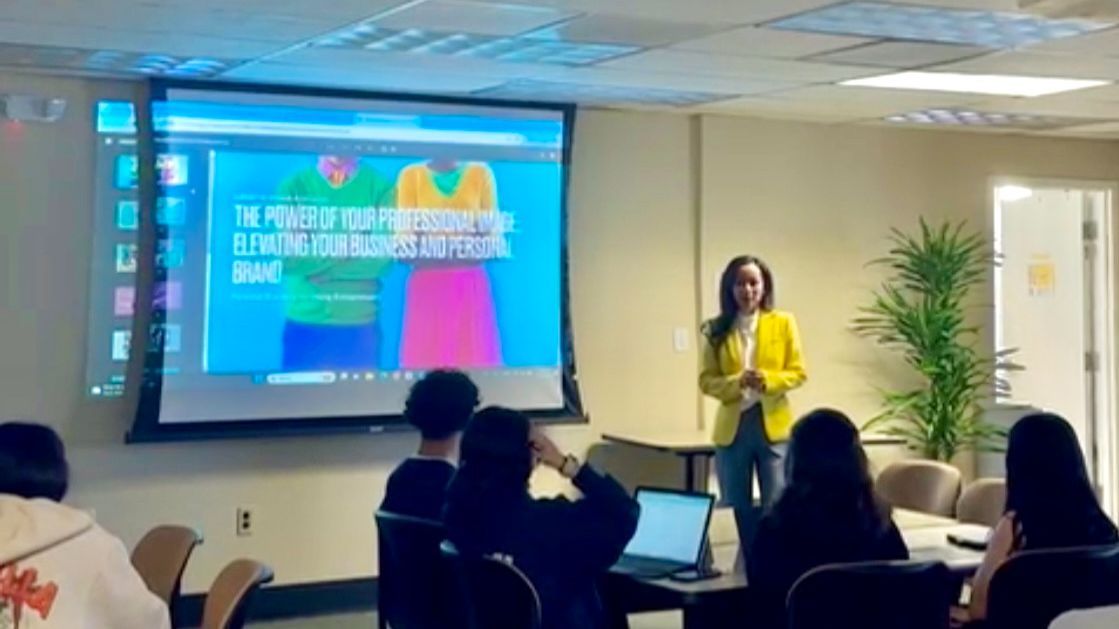
Talent Connect recently partnered with the SCEDC (South County Economic Development Council) to contribute to the Young Entrepreneurs Academy. In this program, Talent Connect provided mentorship in personal branding to senior high school students who aspire to become entrepreneurs. The mentorship focused on helping students develop their personal brand, equipping them with the skills and knowledge necessary to effectively present themselves and their business ideas. Through workshops and one-on-one sessions, Talent Connect's mentors guided students in creating a compelling personal brand that reflects their unique strengths and entrepreneurial vision. This initiative aims to empower young entrepreneurs with the confidence and tools needed to succeed in their future business endeavors.

For the last 23 years, the Kyoto Symposium Organization (KSO) has facilitated a scholarship program for high school seniors in San Diego and Tijuana, in partnership with the San Diego Foundation and Fundación Internacional de la Comunidad A.C. (FIC). Supported by over $4.8 million in grants from the Inamori Foundation, these programs offer invaluable educational opportunities to deserving students. We have had the privilege of serving as an education advisory board member with FIC for the last two years, a non-profit based in Tijuana, Mexico. Through this role, I participate annually in the adjudication committee for the Tijuana student scholarships. This experience has allowed me to witness firsthand the exceptional talent and innovation in our community. I am excited to continue this collaboration for many years to come and make a meaningful impact on high school students and our community's lives by highlighting the importance of nurturing and supporting young talent.
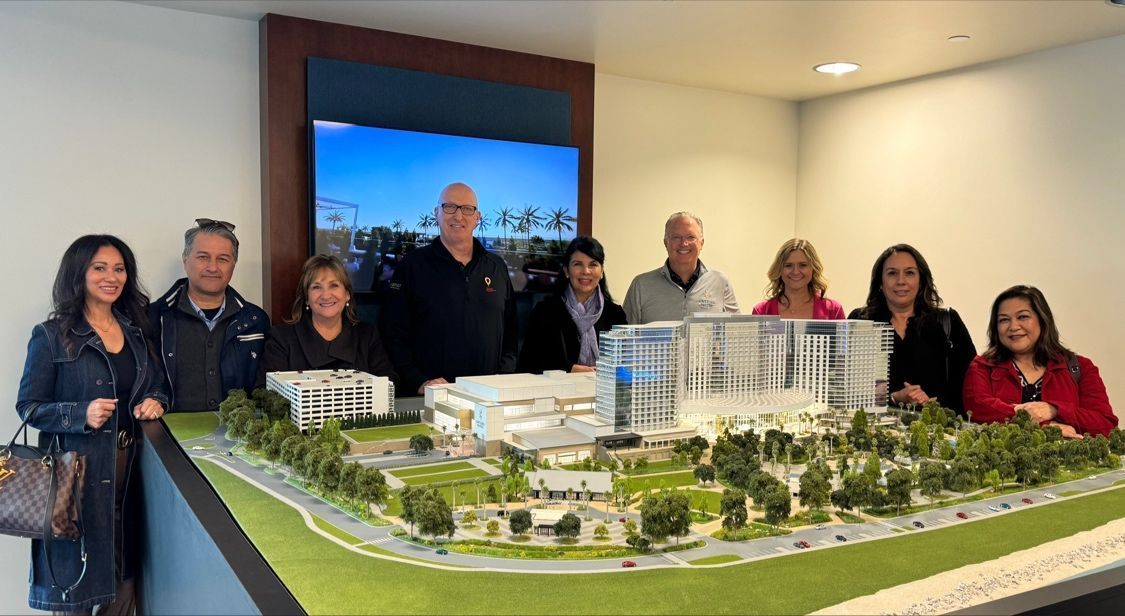
As an active board member of the Chula Vista Chamber of Commerce, our company is deeply committed to supporting and enriching the local business community. Through our volunteer efforts, we collaborate with fellow business leaders to promote economic development, advocate for local businesses, and drive initiatives that enhance the quality of life in Chula Vista. Our involvement includes participating in strategic planning sessions, organizing community events, and providing mentorship to emerging entrepreneurs. By working closely with the Chamber, we strive to foster a thriving business environment that benefits all members of our community. Our dedication to volunteerism reflects our belief in the power of community engagement and our ongoing commitment to making a positive impact in Chula Vista.
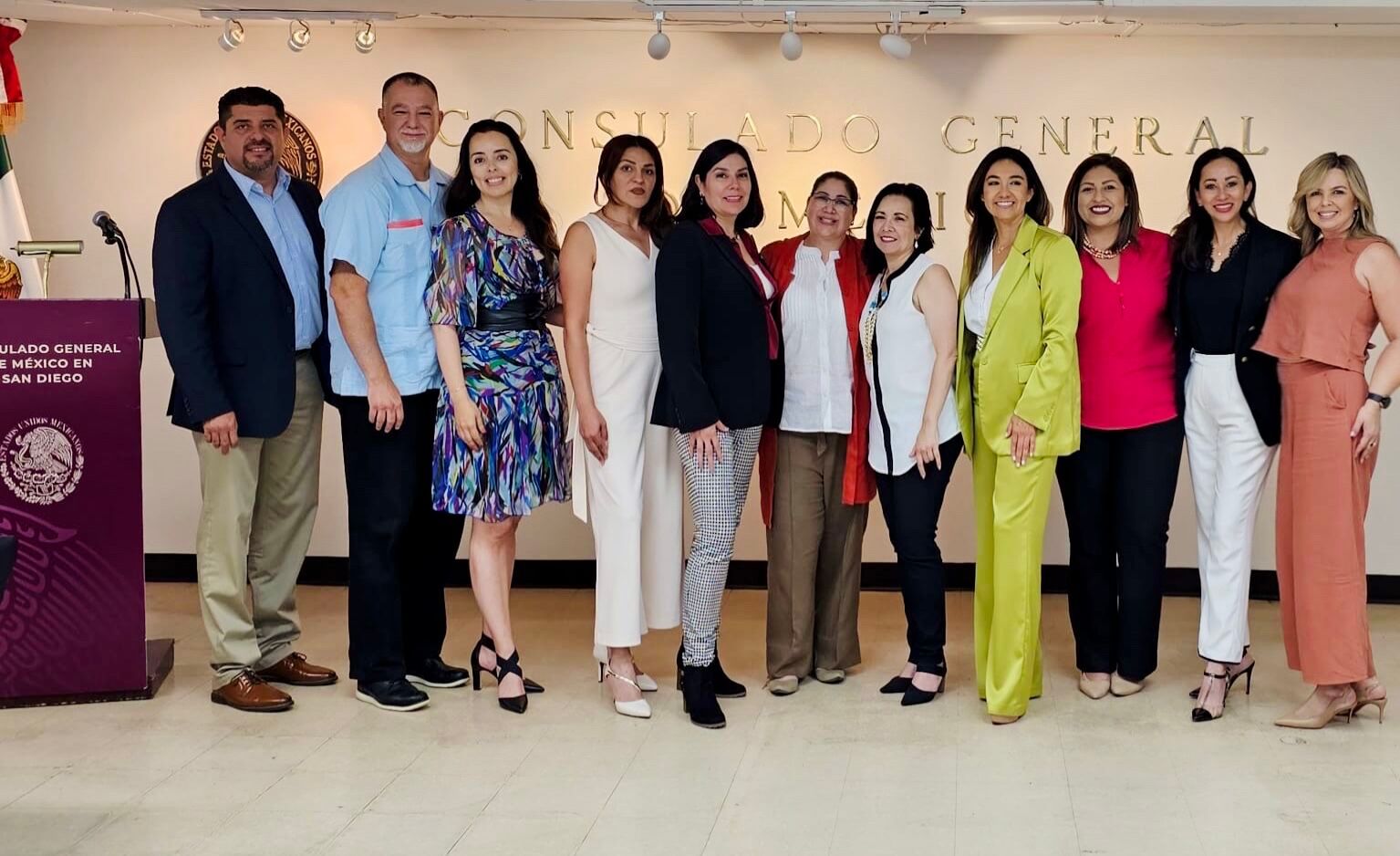
This program is designed for Mexican women in San Diego County who wish to start or grow their own businesses. The Women Entrepreneurs Consular Entrepreneurship Program for Mexican Women Abroad (PCEME) will take place from May to September 2024. The PCEME aims to provide women of Mexican origin living abroad with educational tools, information, and training in entrepreneurship to help them develop and establish their business ideas. Talent Connect staff has provided mentorship and training to participants in various areas, including staffing and recruiting, human resources, and marketing.

As the Events Chair for the San Diego County Hispanic Chamber of Commerce, our company takes pride in leading initiatives that celebrate and support the Hispanic business community. Our volunteer work involves organizing and coordinating a variety of events that provide valuable networking opportunities, professional development, and cultural enrichment. Through these events, we aim to strengthen community ties, promote business growth, and highlight the achievements of Hispanic entrepreneurs. Our role includes planning annual galas, business expos, and educational workshops, ensuring each event is impactful and meaningful. By dedicating our time and resources to this role, we demonstrate our commitment to fostering an inclusive and dynamic business environment in San Diego County, while empowering Hispanic business owners and professionals to thrive.
Company News

What an incredible evening at the MAAC Soirée! It was a pleasure reconnecting with the MAAC team and celebrating the milestones we've achieved together this year. We're proud to support such a dedicated organization and are excited about the continued impact we can make together. Here’s to even greater success and partnership in the future!

On August 22nd, our founder and CEO Lizzette Weber, participated in a dynamic panel discussion hosted by DEITAC titled “Industry, Design, and Technology: Strategies to Attract Innovative Talent.” The panel featured thought leaders including Adriana Eguia Alaniz , coordinator of DEITAC’s Industrial Developers Committee, Miguel Abarca and Project Director at Gensler, and Jorge Gracia, Founder of Gracia Studio. Together, they explored the latest trends in industrial development and how these align with the evolving needs of the workforce. The conversation highlighted how innovative industrial park designs and Tijuana’s strategic positioning are key to attracting and retaining top talent. It was an enriching exchange that underscored the importance of a sustainable, human-centered approach to industrial growth. We’re excited to continue fostering innovation and talent attraction in the region!

We’re excited to share that our Founder and CEO, Lizzette Weber has been honored as Business Leader of the Year by the NLBWA San Diego (National Latina Business Women Association San Diego) The celebration aboard the Hornblower yacht in San Diego Bay was a memorable event, with a delicious brunch, bottomless mimosas, and a wonderful atmosphere. Lizzette was recognized among other incredible women nominated across various categories, all embodying the mission of NLBWA to empower and elevate Latina leaders. This award reflects Lizzette’s dedication and the collective efforts of our entire Talent Connect team. We’re proud to be part of her journey and look forward to the future✨
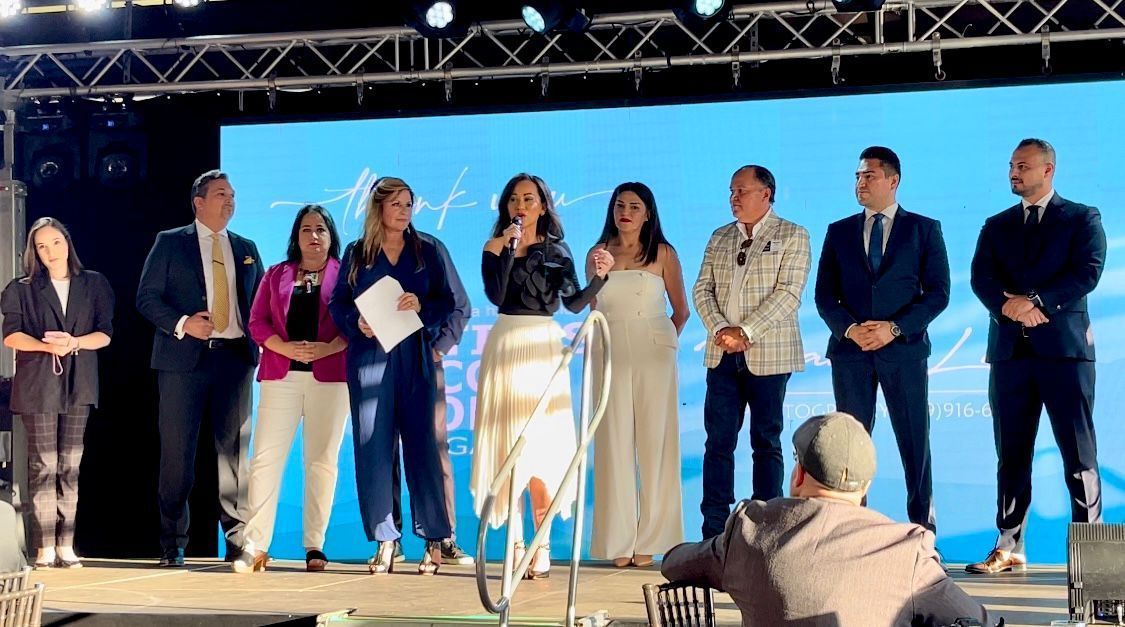
An unforgettable evening celebrating the strength and spirit of the Latino community! Talent Connect Executive Search & HR Solutions, a proud Latino-owned company championing diversity and inclusion, was thrilled to sponsor the "Latinos Unidos" event at the Jamul Casino Rooftop. Congratulations to the San Diego County Hispanic Chamber of Commerce , National Latina Women Business Association [NLBWA-SD], Latin Business Association , La Revista Binacional , SAN DIEGO LA RAZA LAWYERS ASSOCIATION , and NAHREP San Diego- NAHREP - National Association of Hispanic Real Estate Professionals® for organizing this successful gathering. Witnessing leaders and businesses unite to make a meaningful impact in our community was truly inspiring. With over 250 guests from various community partnerships, it was an incredible opportunity to connect and network. A special thanks to our amazing team members who attended and those who supported us in spirit. Chrysanne Weber Anaid Alvarez Nicole Yee Jared Priscila Cruz Lorís Maymes Kassouf Together, we're making a positive impact and fostering a strong, united community! View our LinkedIn post here...
Testimonials
What Our Clients & Candidates Say
Subscribe to Our Newsletter!
Thank you for your interest in receiving our news updates. We don't spam!




